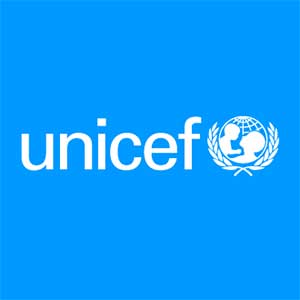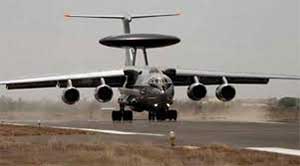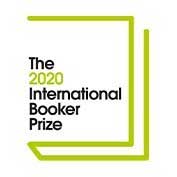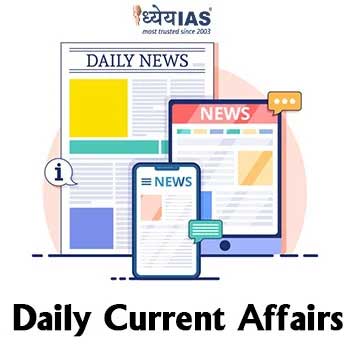Scheduled Castes and Scheduled Tribes Reservation
IN NEWS
- Supreme Court says 2004 verdict on sub-classification of SC/STs needs to be reconsidered and 2004 verdict holding that states do not have the power to further sub-classify the Scheduled Castes and Scheduled Tribes for grant of quotas needed to be revisited by a seven or more judges bench.

ABOUT
- A five-judge Bench of the Supreme Court held that States can sub-classify Scheduled Castes and Scheduled Tribes in the Central List to provide preferential treatment to the “weakest of the weak” and advocated that an “authoritative pronouncement” was needed with respect to the effect of Constitutional provisions and whether sub- classification is permissible only with respect to the socially and educationally backward classes and not with respect to SCs and STs.
- The top court observed that the benefit of quota by and large is not percolating down to the “neediest and poorest of the poor” and it was “crystal clear” that creamy layer concept for excluding affluent people “can be applied to” SCs and STs.
- A five-judge constitution bench headed by Justice Arun Mishra said the 2004 verdict of a bench of same strength in the E V Chinnaiah case had held that states cannot give preference to certain Scheduled Castes as it would amount to “tinkering with” the Presidential list of SCs and STs under the Constitution and this required to be relooked.
Justice Arun Mishra Judgement
- The Constitution Bench led by Justice Mishra said reservation has created inequalities within the reserved castes itself. There is a “caste struggle” within the reserved class as the benefits of reservation are being usurped by a few.
- It is clear that caste, occupation, and poverty are interwoven. The State cannot be deprived of the power to take care of the qualitative and quantitative difference between different classes and to take ameliorative measures.
- In his 78-page judgment for the Bench, Justice Mishra said the Scheduled Castes and Scheduled Tribes in the Central List do not constitute a “homogenous group”.
- Justice Mishra’s judgment is significant as it fully endorses the push to extend the creamy layer concept to the Scheduled Castes and Scheduled Tribes.
E V Chinnaiah case Judgment
- With this, the Bench took a contrary view to a 2004 judgment delivered by another Coordinate Bench of five judges in the E.V. Chinnaiah case.
- The Chinnaiah judgment had held that allowing the States to unilaterally “make a class within a class of members of the Scheduled Castes” would amount to tinkering with the Presidential list.
- Now with two numerically equal Benches of judges holding contrary viewpoints, the issue has been referred to a seven-judge Bench of the court.
Report on E-education by UNICEF
Why in NEWS?
- Only 24% of Indian households have internet connections to access e-education, and there is a large rural-urban and gender divide that is likely to widen the learning gap across high, middle and low-income families, according to a new UNICEF report.

About the Report and its findings
- The Remote Learning Reachability report, issued by UNICEF on 27 th August,2020, expressed concerns over children from economically disadvantaged families struggling with access to remote learning.
- Available data indicates that approximately a quarter of households (24%) in India have access to the internet and there is a large rural-urban and gender divide.
- The learning gap is likely to widen across high, middle and low-income families, as children from economically disadvantaged families cannot access remote learning.
- The report further said that students, especially girls, from most marginalised communities do not have easy access to smartphones, and even if they do, internet connectivity is poor, and quality education content is often not available in vernacular languages.
- In India, over 1.5 million (15 lakh) schools have been closed due to the pandemic affecting 286 million (28.6 crore) children from pre-primary to secondary levels, (of which 49 per cent girls). This adds to the 6 million (60 lakh) girls and boys who were already out of school prior to the COVID-19.
- Noting that the Centre and the state governments have put in place several initiatives through digital and non-digital platforms to facilitate continuity of learning at home, the UNICEF called for multiple pathways and outreach strategies to improve access and use of learning materials by children/students, especially in reaching the unreached because of the digital divide.
United Nations International Children’s Emergency Fund (UNICEF)
- UNICEF started as the International Children’s Emergency Fund (IECF) in 1946, formed by the UN Relief Rehabilitation Administration in order to offer relief and healthcare for affected children and mothers in the aftermath of the Second World War.
- In the same year, the UN established the UNICEF to manage its post-war relief work better. Though it became a permanent part of the UN in 1953 and subsequently changed its name to United Nations Children’s Fund, it continues to use the acronym UNICEF.
- It is a United Nations agency responsible for providing humanitarian and developmental aid to children worldwide.
- UNICEF’s activities include-
- Immunizations and disease prevention
- Administering treatment for children and mothers with HIV
- Enhancing childhood and maternal nutrition
- Improving sanitation
- Promoting education
- Providing emergency relief in response to disasters
- UNICEF relies entirely on contributions from governments and private donors.
- Its Headquarter is in New York City, US
Phalcon Airborne Warning and Control Systems
IN NEWS
- The fresh negotiations with Israeli authorities concerned for procurement of the two Phalcon AWACS come in the midst of India's bitter border row with China in high-altitude eastern Ladakh.
ABOUT
- The first production-model AWACS entered service in 1977. The U.S. Air Force uses the AWACS, which it designates as E-3, as a command and control centre for units of its Tactical Air Command and also for command and control activity in its North American Air Defense Command (NORAD).
- The Indian Air Force (IAF) already has three Phalcon AWACS and addition of two more is expected to significantly boost the country's air defence mechanism.
- The AWACS is mounted on Russian-origin Illyushin-76 transport aircraft and it is called an "eye" in the sky because of its superior surveillance capabilities.
- The Phalcon AWACS is capable of tracking enemy aircraft, hostile missiles, movement of troops across the border without crossing territorial limits.

AWACS
- An airborne early warning and control (AEW&C) system is an airborne radar picket system designed to detect aircraft, ships and vehicles at long ranges and perform command and control of the battlespace in an air engagement by directing fighter and attack aircraft strikes.
- AWACS (Airborne Warning and Control System) is the name of the specific system installed in the E-3 and Japanese Boeing E-767 AEW&C airframes, but is often used as a general synonym for AEW&C INDIAN AWACS
- The DRDO Airborne Early Warning and Control System (AEW&CS) is a project of India's Defence Research and Development Organization to develop an airborne early warning and control system for the Indian Air Force. It is also referred to as 'NETRA' Airborne Early Warning and Control System (AEW&CS).
2020 International Booker Prize
IN NEWS
- International Booker: Dutch author Marieke Lucas Rijneveld wins 2020 prize

ABOUT
- Dutch author Marieke Lucas Rijneveld on Wednesday won the 2020 International Booker prize for debut novel The Discomfort of Evening, a story of childhood grief. At 29, Rijneveld is the youngest author to win the prestigious prize.
- Dubai-based Indian-origin author Avni Doshi was among the 13 authors longlisted for the prestigious 2020 Booker Prize for her debut novel Burnt Sugar, alongside double Booker winner Hilary Mantel for The Mirror and The Light.
BOOKER PRIZE
- The International Booker Prize (formerly known as the Man Booker International Prize) is an international literary award hosted in the United Kingdom. The introduction of the International Prize to complement the Man Booker Prize was announced in June 2004.
- Sponsored by the Man Group, from 2005 until 2015 the award was given every two years to a living author of any nationality for a body of work published in English or generally available in English translation. It rewarded one author's "continued creativity, development and overall contribution to fiction on the world stage", and was recognition of the writer's body of work rather than any one title.
- Crankstart, the charitable foundation of Sir Michael Moritz and his wife, Harriet Heyman began supporting The Booker Prizes on 1 June 2019. From this date, the prizes will be known as The Booker Prize and The International Booker Prize.
- Since 2016, the award has been given annually to a single book in English translation, with a £50,000 prize for the winning title, shared equally between author and translator.
FROM INDIA
| YEAR | NAME | NAME OF WORK |
| 1971 | V.S. Naipaul | Ina Free State |
| 1980 | Anita Desai | Clear Right Day |
| 1981 | Salman Rushdie | Midnight’s Children |
| 1993 | Salman Rushdie | Booker of Booker(Best Novel in 25 Years of Booker) Midnight’s Children |
| 1997 | Arundhati Roy* | The God of Small Thing |
| 2002 | Rohinton Mistry | Such a Long journey |
| 2006 | Kiran Desai | The Inheritance of Loss |
| 2007 | Indra Sinha | Animal People |
| 2008 | Arvind Adiga* | The White Tiger |
| 2011 | Amitav Ghosh | River of Smoke |
| 2012 | Jeet Thayil | Narcopolis |























